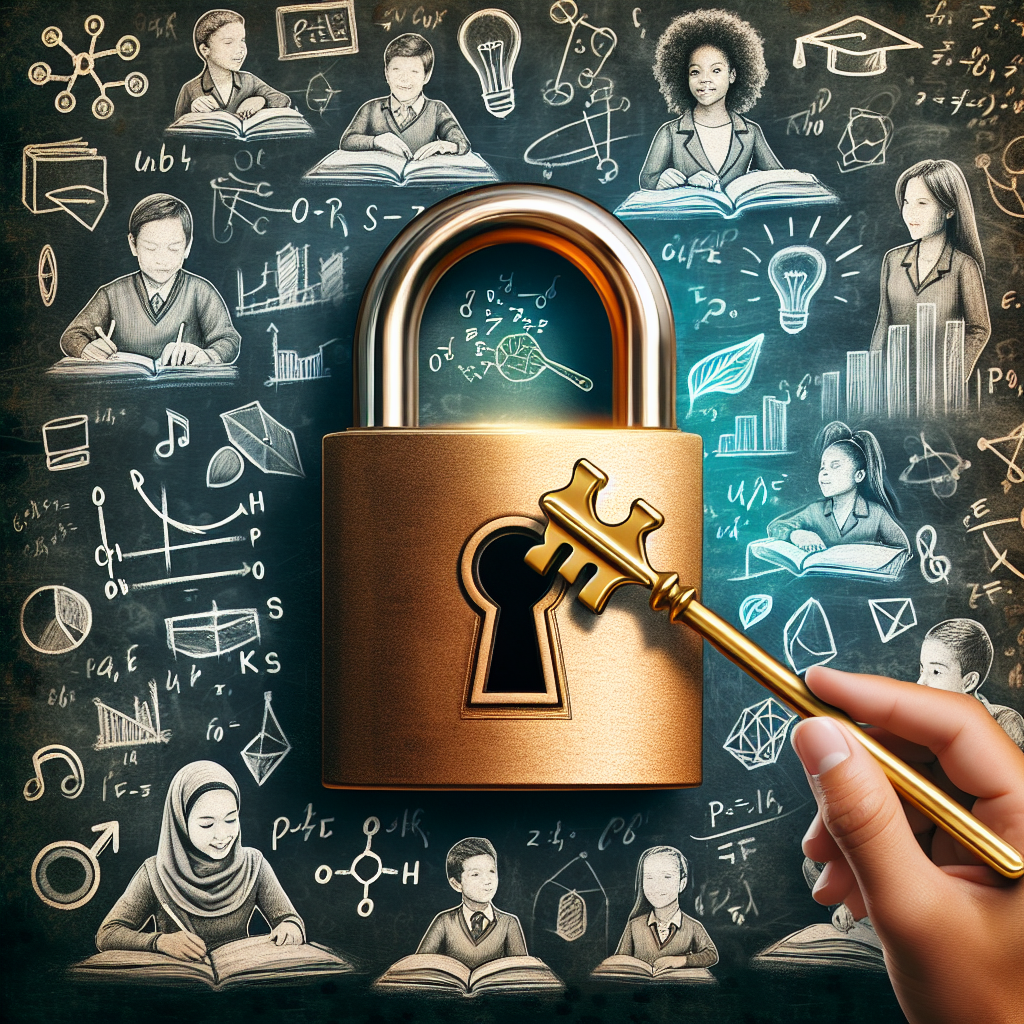Introduction
In a rapidly changing world, education remains a cornerstone for building futures. Yet, not every student finds the classroom to be a place of growth and opportunity. For struggling students, the challenges can feel insurmountable. Unlocking Potential: Effective Classroom Interventions for Struggling Students is not merely a statement; it’s a mission. This article delves into strategies, tools, and real-world applications that not only help these students survive but thrive.
Understanding the Need for Intervention
The Struggling Student Landscape
In any classroom, a range of academic abilities is present. Struggling students, often identified through low test scores, inconsistent performance, or behavioral challenges, represent a significant portion of the student body. According to the National Assessment of Educational Progress (NAEP), nearly 75% of eight-grade students are not proficient in reading, underlining the need for targeted interventions.
The Importance of Early Identification
Effective interventions begin with early identification. Teachers equipped with strong observational skills can identify students who need additional support. Early intervention not only improves academic outcomes but also fosters self-esteem and motivation.
Case Study: The Power of Early Identification
At Lincoln Middle School, teachers noticed that several sixth graders were consistently failing math. By implementing a systematic screening process early in the year, the school was able to identify those in need of additional support. They provided tailored tutoring sessions, leading to a 30% increase in proficiency scores by the year’s end.
Effective Classroom Interventions
1. Personalized Learning Plans
Unlocking Potential: Effective Classroom Interventions for Struggling Students often begins with personalization. Individual learning plans allow teachers to tailor their approach based on each student’s unique needs.
Key Components of a Personalized Learning Plan
- Assessment Data: Regular assessments to track progress.
- Goal Setting: Students should collaborate with teachers to set achievable goals.
- Flexible Pacing: Allowing students to learn at their own pace helps maintain engagement.
2. Differentiated Instruction
Differentiated instruction is another powerful strategy. It involves modifying content, process, product, and learning environment to suit diverse learners.
Real-World Application
A high school in California implemented tiered assignments, offering varying levels of complexity for topics in history. This allowed struggling students to grasp foundational knowledge while others explored more complex themes.
3. Collaborative Learning
Group activities and peer tutoring can be effective. When students work together, they reinforce each other’s learning and create a supportive community.
The Benefits of Collaboration
- Peer Support: Enhances understanding and retention.
- Social Skills: Builds communication and teamwork abilities.
- Diverse Perspectives: Students benefit from multiple viewpoints.
4. Positive Behavioral Interventions and Supports (PBIS)
Creating a positive classroom environment can significantly influence academic performance. PBIS focuses on reinforcing good behavior, which can reduce disruptions and enhance learning.
Implementing PBIS in the Classroom
- Clear Expectations: Setting and teaching behavioral expectations.
- Frequent Feedback: Regular check-ins to praise positive behaviors.
- Consequences for Misbehavior: Implementing fair consequences that encourage accountability.
5. Technology-Enhanced Learning
Modern technology plays a vital role in education. Utilizing educational software can cater to individual learning styles and paces.
Case Study: Technology in Action
At Pine Grove High, the use of adaptive learning software allowed teachers to monitor progress in real-time. Students who struggled with reading received personalized resources, resulting in a 40% increase in reading fluency over six months.
6. Engagement Through Multisensory Learning
Incorporating various senses into lessons can help struggling students better grasp concepts. Multisensory learning can stimulate visual, auditory, and kinesthetic channels.
Practical Implementation
Teachers might use visual aids, hands-on activities, and group discussions to reinforce content. For instance, while studying ecosystems, students might create a diorama, enhancing understanding through tactile and visual experiences.
7. Targeted Intervention Programs
Implementing specific programs that target core areas of weakness can help. Schools might introduce after-school programs focused on math or reading.
Success Story: Targeted Programs
In an urban school district, the introduction of an after-school reading intervention program saw 80% of participating students improve their reading skills by a grade level or more within six months.
Measuring Effectiveness
Data-Driven Decision Making
Tracking progress is essential. Utilizing pre- and post-assessments can gauge the effectiveness of the interventions.
Developing Benchmark Criteria
Schools should establish clear benchmarks across grade levels to measure student progress. Regular analysis of this data allows for timely adjustments to intervention strategies.
Feedback from Students and Educators
Surveys and feedback from both students and teachers can further refine intervention methods. Gathering insights provides a more rounded view of the success of interventions.
Conclusion
The mission of Unlocking Potential: Effective Classroom Interventions for Struggling Students is to equip educators with the tools they need to foster growth in every student. By personalizing learning experiences, using collaborative strategies, and implementing positive behavioral supports, we can truly make a difference.
Key Takeaways
- Early identification of struggling students is critical.
- Personalization and differentiation are essential strategies.
- Collaboration fosters community and support.
- Technology and multisensory approaches engage diverse learners.
- Regular assessment and adjustment of methods can drive success.
FAQs
1. What is the first step in identifying struggling students?
Early screening and regular assessment of academic performance can help identify students who need additional support.
2. How can personalized learning plans be developed?
Personalized plans should be based on assessments, target specific skills, and involve collaborative goal-setting between students and teachers.
3. What role does technology play in supporting struggling students?
Educational technology can provide tailored resources and real-time feedback, making learning more engaging and effective.
4. How can teachers foster a positive classroom environment?
Implementing Positive Behavioral Interventions and Supports (PBIS) can help create a nurturing environment focused on reinforcing positive behaviors.
5. What are some effective ways to implement collaborative learning?
Group projects, peer tutoring, and cooperative learning activities can encourage collaboration and support among students.
By championing strategies that Unlock the Potential of every student, we pave the way for a brighter future, fostering not just academic success, but lifelong love for learning.

